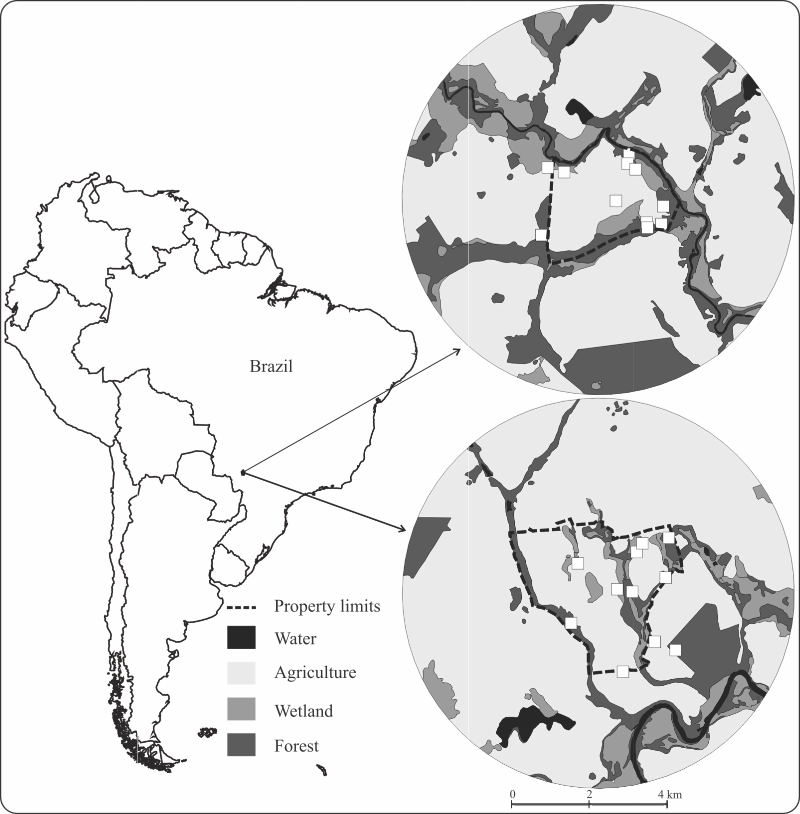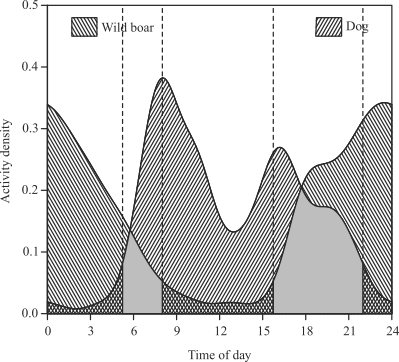Abstract:
The objective of this work was to estimate an index of the relative biomass per species, in a medium to large-sized mammal community, as well as to determine how the introduced wild boar (Sus scrofa) fits into this index, and to verify if the occupancy of sites by domestic dogs interferes with those of wild boars and how much the periods of dogs’ activity overlap those of wild boars. The biomass/effort index was measured for each native mammal species and for the introduced wild boar, in two surveyed farms in Brazil’s Western Atlantic Forest range, through the use of camera trappings that were also used to verify if dogs and wild boar overlap in space and activity time. Wild boars seem to dominate the community, just a few years after their presence was first recorded in the region. Surprisingly, several native endangered mammal species persist in the highly modified landscape of the studied areas, but their population trends are still unknown. Wild boars and dogs generally occupy the same areas; however, they do not overlap in activity time, which is an indicative that it is unlikely that the dogs can effectively protect the crops.
Index terms:
Canis familiaris; Sus scrofa; activity time; community composition; niche overlap

 Invasive wild boars and native mammals in agroecosystems in the Atlantic Forest of Western Brazil
Invasive wild boars and native mammals in agroecosystems in the Atlantic Forest of Western Brazil Thumbnail
Thumbnail
 Thumbnail
Thumbnail
 Thumbnail
Thumbnail


